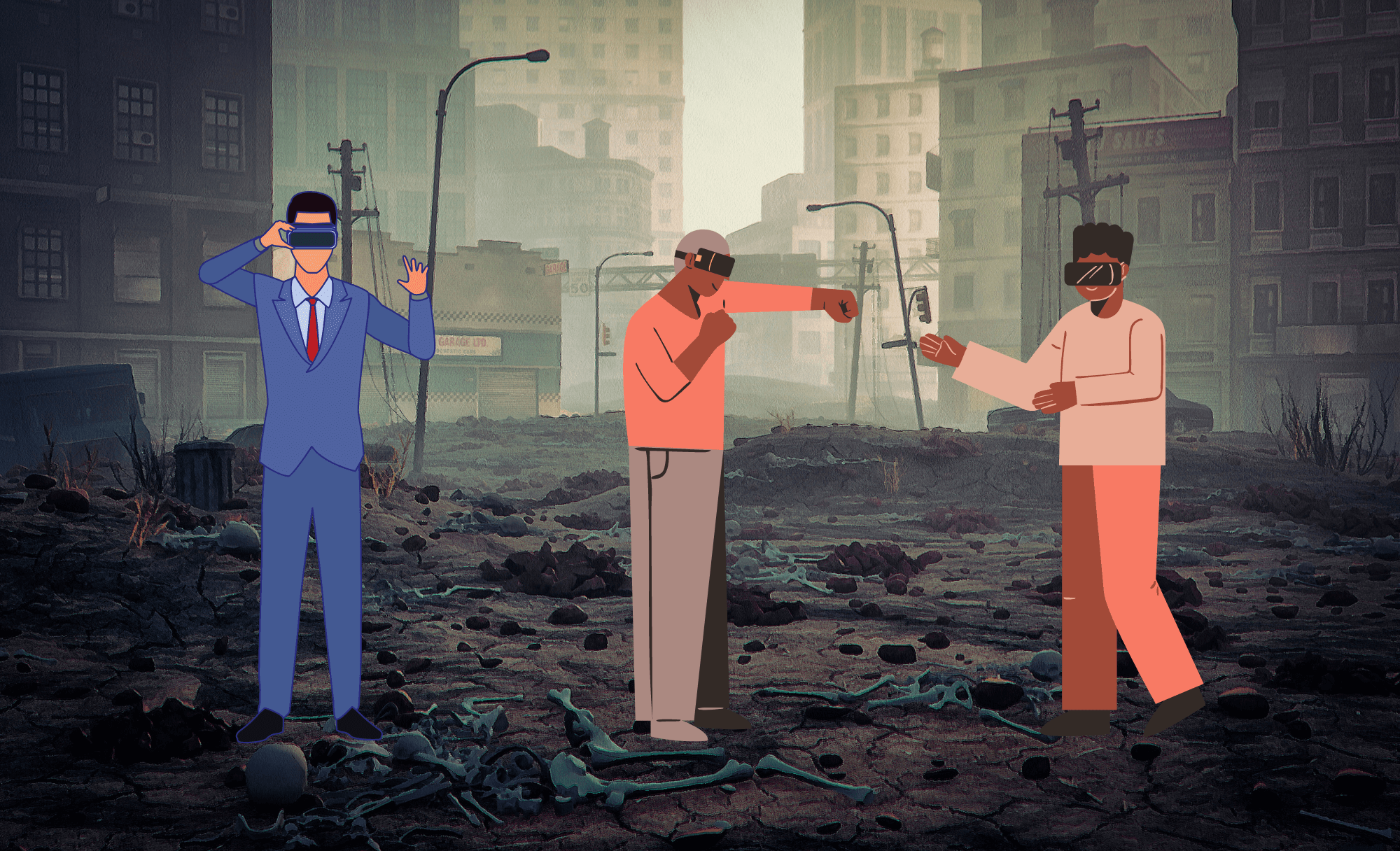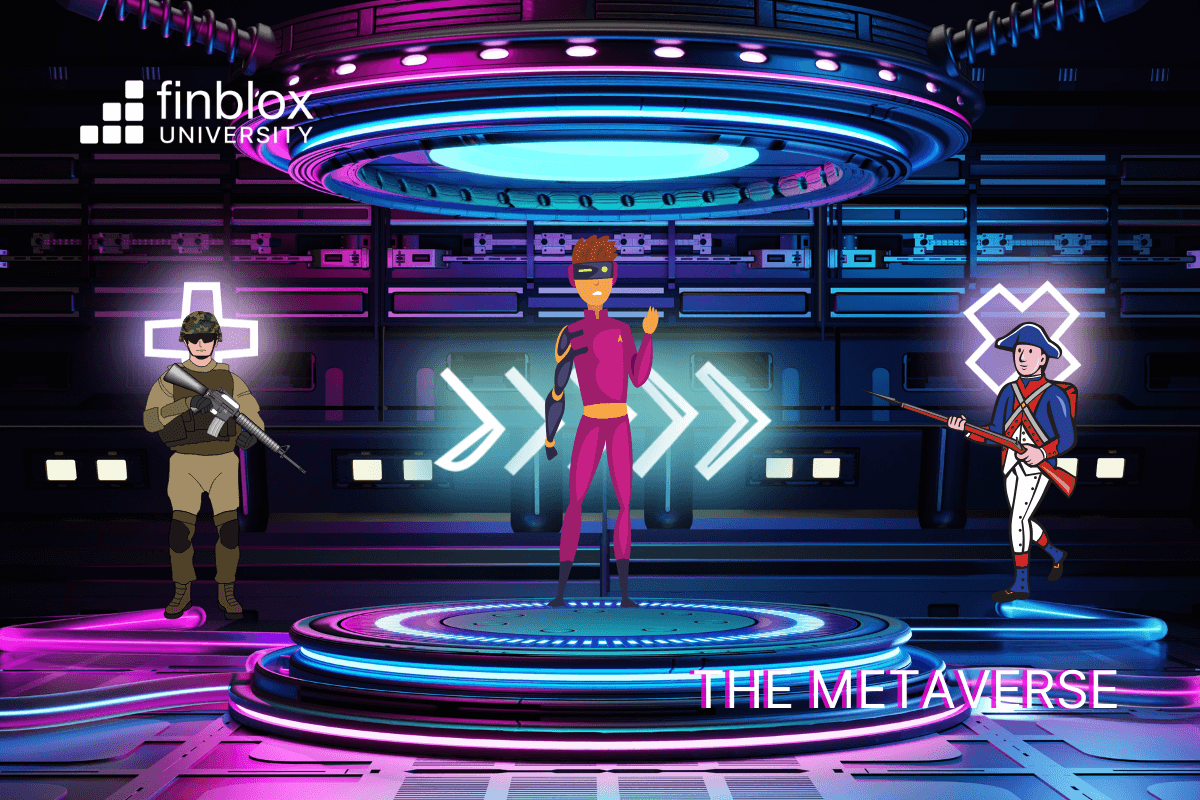Learn everything you need to know about the metaverse and its origins, including major projects, market growth, and the criticism surrounding it!
The concept of the metaverse was originally derived from Neal Stephenson's sci-fi novel Snow Crash - which depicted a dystopian future where users could dive into virtual worlds to escape their reality.
In crypto, the metaverse is simply a blockchain-based, online environment made possible through computer, VR, and AR technologies. Hyperrealization of real-world social interactions is the main focus of the metaverse, and this is achieved through outlets such as gaming, art collection, open-world exploration, and even ownership of real estate.
What are some popular metaverse projects?
Decentraland (MANA) was one of the first mainstream metaverse projects, founded by Argentinians Ari Meilich and Esteban Ordano in 2015. It was built on the Ethereum blockchain, and revolves around the purchase and ownership of virtual LAND using MANA (their governance token). LAND can be developed by users into shopping malls, arcades, gyms - and virtually anything you can think of. Two or more parcels of land that sit adjacent to each other are known as "estates."
Within the Decentraland metaverse, users can chat and play games with each other - and compete for various rare in-game items and titles that have been tokenized into non-fungible tokens (NFTs). An entire marketplace was built to assist with this very function.
Since then, numerous celebrities have hopped onboard to fuel the hype - including the likes of Paris Hilton, Deadmau5, 3LAU, and more. Institutional adoption has seen strong growth in Decentraland as well - with Samsung, Atari, Walmart, and Sotheby's all purchasing plots of LAND for eye-watering sums.
The Sandbox (SAND) is the closest rival of Decentraland, established in 2011 by Arthur Madrid and Sebastien Borget. However, it did not migrate onto the Ethereum blockchain until January 2018 - where it also became 3D.
The Sandbox functions very similarly to Decentraland, with SAND being used as the governance token to facilitate in-game purchases. However, The Sandbox has strategically geared towards mass commercialization in a very short span of time - boasting more partnerships, influencers, celebrities, and available LAND NFTs than Decentraland (166K vs. 90K!).
Adidas, Warner Music Group, Square Enix, Gucci, and Snoop Dogg have all made their foray into The Sandbox. Furthermore, the development team has offered special incentives to attract large influencers with over a million followers to purchase LAND.
How does the metaverse work?
To log into the metaverse, users simply need to have access to a computer (or mobile phone, depending on the supported device). Advanced technology such as virtual reality headsets and motion capture gloves can also be employed for even more realistic effect - although they are seldom available to a majority of users.
During account creation, the platform will ask you to create an avatar - which is a visual representation of yourself. Avatars can have hundreds or even thousands of combinations of facial features, body types, and clothing.
In order to participate in the virtual economy, you must first link your crypto wallet to the platform so that you can conduct purchases and receive tokenized rewards in-game. This will also enable you to cash out and sell your items for real-world currency.
That's about it! As the metaverse evolves in the future, users will be able to experience some form of augmented reality (AR) that may even blend their in-game experiences with those that are available in their physical location.

Why are people critical of the metaverse?
The metaverse has often been criticized as an outlet for pouring billions of dollars into a "fake" economy that has no real-world benefit - other than a means of avoiding problems that deserve more attention such as climate change, hunger, and war relief.
There are also concerns over privacy in the metaverse, as these hyper-enhanced interactions will inevitably provide corporations with an even greater ability to collect consumer data. Location, browsing history, purchasing habits, and physical differences can be tracked by the complex hardware required for full immersion.
Finally, critics of the metaverse fear that society will soon devolve into lethargic, unproductive beings such as those depicted in Disney's "Wall-E" - spending most of their day-to-day plugged in, rather than cherishing the world they have.
The Takeaway:
In 2020 alone, the metaverse market was already worth 478 billion dollars - and is expected to be worth nearly 800 billion by 2024. This represents a staggering growth of 13.1% every year, with major corporations such as Microsoft, Meta, Roblox, Activision, Tencent, and Epic Games continuing to develop new technologies to further immerse their users.
Finblox remains keenly interested in the potential of the metaverse, and currently supports The Sandbox (SAND) token which can be purchased and held on our platform for passive income. More supported metaverse tokens are sure to come in the future - and there are even plans to explore our own take on NFT gaming.
Thanks for reading! Please subscribe if you haven't already - and stay tuned for our next article, which will dive into the complicated topic of algorithmic stablecoins.
This content is provided for informational purposes only, and should not be relied upon as legal, business, investment, or tax advice. You should consult your own advisers as to those matters. Charts, graphs and references to any digital assets are for informational and illustrative purposes only.


